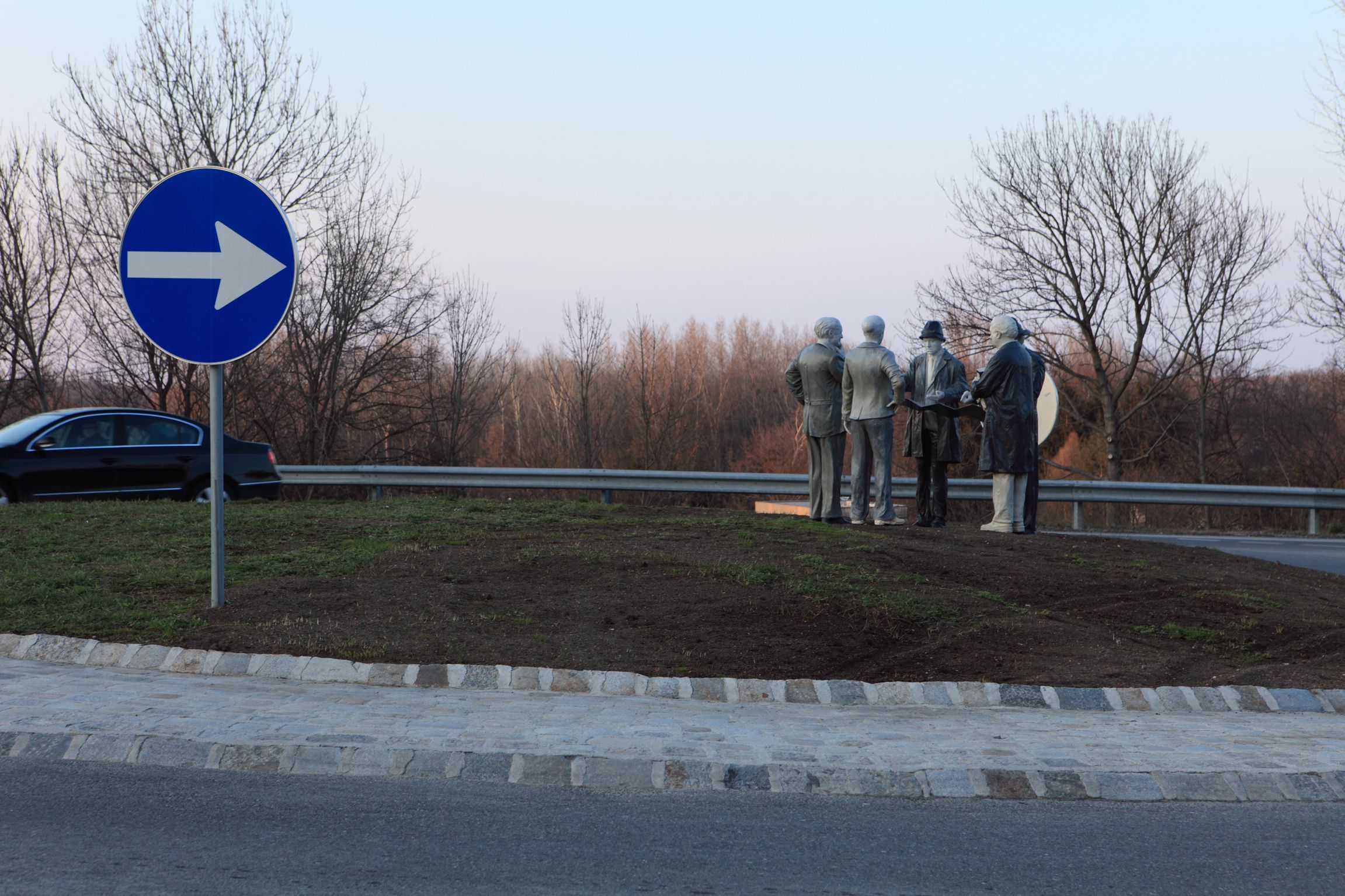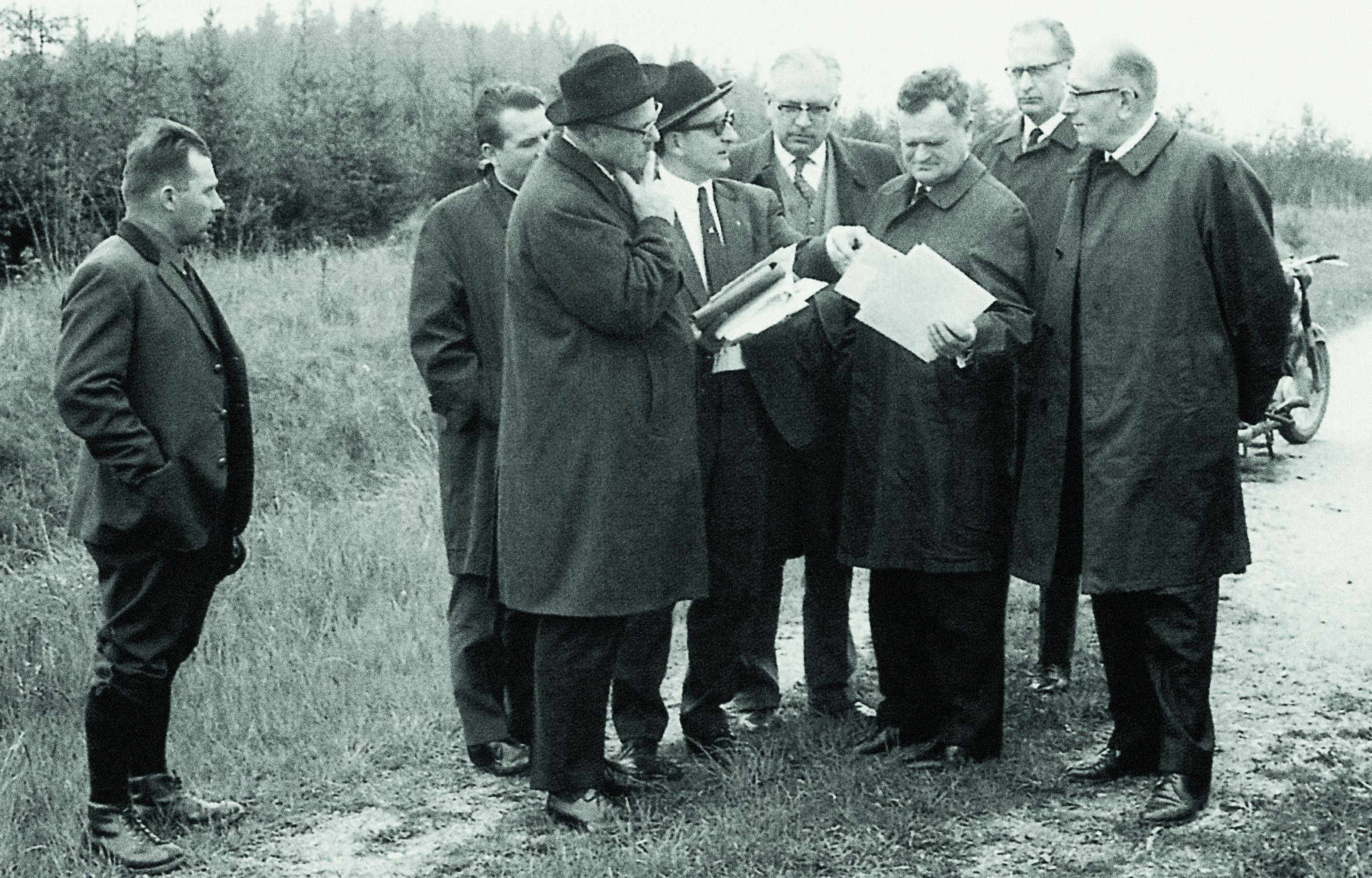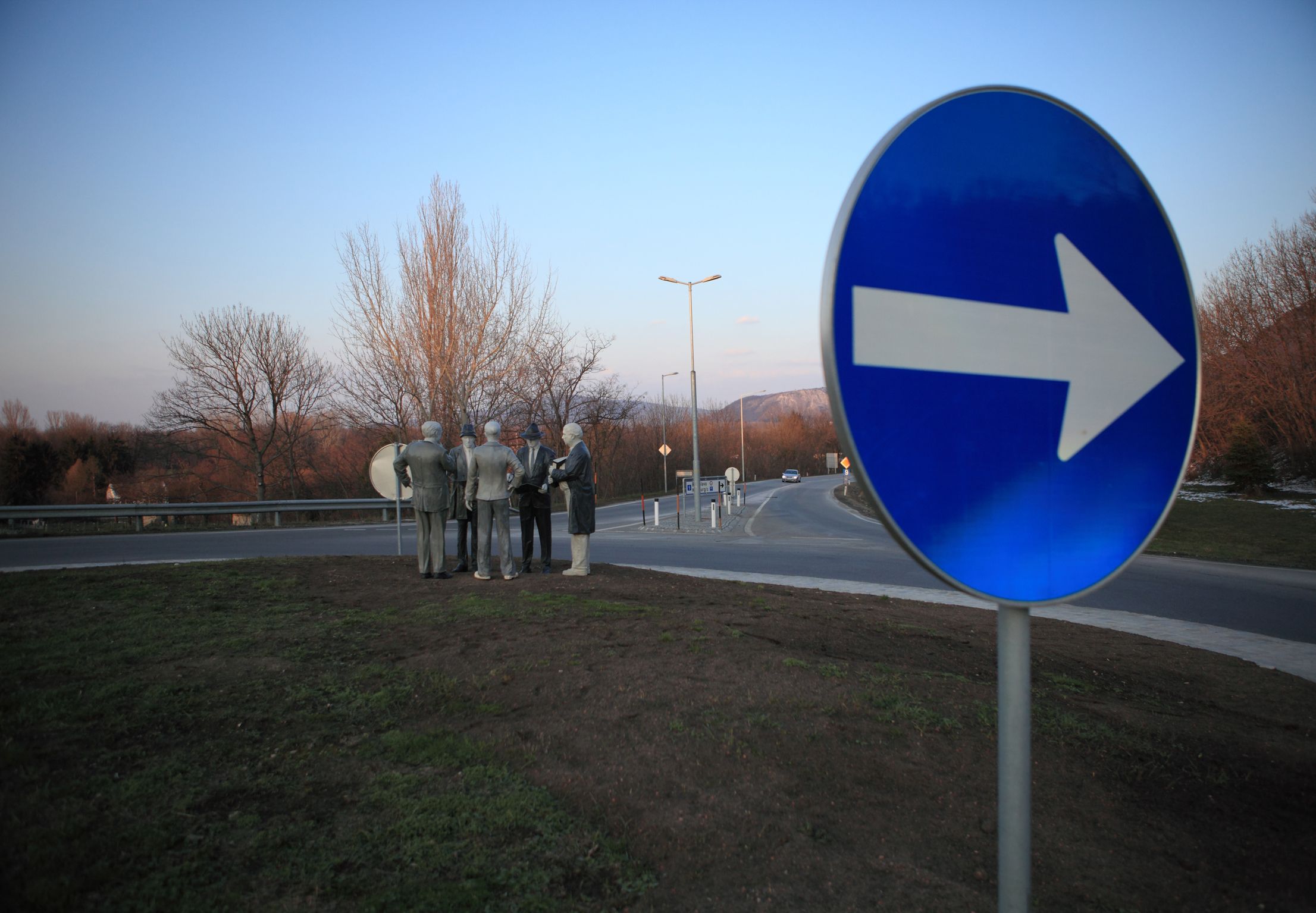Iris Andraschek,
Hubert Lobnig
:
Die Baubesprechung
Back
Information
At first glance, the group of five sculptures on the traffic island in the roundabout near the bridge over the Danube in Hainburg creates the impression that these are actual people standing in a circle, facing each other engaged in a conversation. They seem to be studying and discussing a blueprint. This illusion created by Iris Andraschek and Hubert Lobnig perplexes and inspires people driving by. It integrates them into a narrative while also appearing to recount an important moment in the history of civil engineering in Lower Austria. If this were a film, the opening captions would say: "Based on a true story." The installation "Die Baubesprechung" won first prize in an invitational competition intended to commemorate the Lower Austrian governor Andreas Maurer, who served in office from 1966 to 1981. Maurer went down in the history of Lower Austria as a charismatic construction planner and promoter of infrastructure. At his initiative, bridges over the Danube were built for the towns of Hainburg, Krems, and Melk. After their completion in 1972, locals reverently referred to them as the “three bonds that keep our region together.” In commemoration of Maurer’s life work, the bridge over the Danube in Hainburg was later named after him, and now the artwork on the traffic island adds a remarkable artistic element to his memory.
In preparation for this project, the artists researched historical photographs of actual pre-construction meetings at this very location that were attended by Maurer, who was governor at the time. They used these photographs as a basis for a group of figures, restaging the scene with the help of five actors, then making casts of the figures. The reinforced, cement-like material highlights concrete as a building substance, which at the time of the construction of the bridge over the Danube represented the latest in technological progress. The human figures were also painted black and white, reminding us of the documentary photographs from the time when the bridge was built. "Die Baubesprechung" on the traffic island is a two-fold illusion that simulates factual as well as historical reality. More precisely, it is a construction of reality that – along with the potential for a debate on realism in this context – allows room for a contemporary monument because it does not glorify a particular individual. By taking what goes on behind the scenes when building a bridge and putting this in the foreground in the form of a pre-construction meeting, Iris Andraschek and Hubert Lobnig attempt to foreclose pathos as much as possible, both in terms of content as well as form. They said: "By showing the protagonists as deeply involved in a discussion, as turned away from the audience, the monument becomes de-monumentalized; it is characterized not by idealization, but by everyday life. The frontality of classic monuments is replaced by a circular shape."
Already in the process of planning this work, the artists became fascinated by Auguste Rodin’s group of sculptures The Burghers of Calais from 1895. In this work, Rodin overcomes the hierarchical relation between monument and viewers by leaving out the plinth, a common feature at the time. He also refused to focus on a single, main figure, or to feature the usual heroic gestures. As in Rodin’s groundbreaking artwork, Die Baubesprechung lets viewers become part of the scene when driving around the group of sculptures. Hubert Lobnig once said: "The common cause democratizes the group for the moment: Hierarchies no longer play a role – it’s all about the project. According to many sources, Andreas Maurer was mainly known for valuing issues over vanity. He was more interested in helping people and in accomplishing the task at hand than in upholding hierarchies."
(C.Offergeld)
Images (5)





